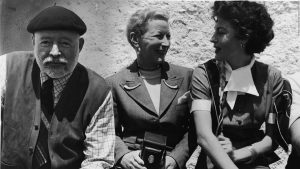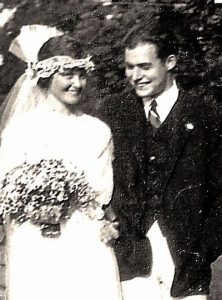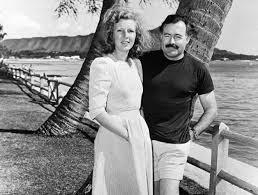 Hemingway scholar Nancy Sindelar begins her book, ―”Hemingway’s Passions: His Women, His Wars, and His Writing” by describing Hemingway thusly: “Journalist, adventurer, sportsman, lover — Ernest Hemingway, the Nobel Prize-winning author, embodied many talents and pursued numerous interests during his legendary lifetime.”
Hemingway scholar Nancy Sindelar begins her book, ―”Hemingway’s Passions: His Women, His Wars, and His Writing” by describing Hemingway thusly: “Journalist, adventurer, sportsman, lover — Ernest Hemingway, the Nobel Prize-winning author, embodied many talents and pursued numerous interests during his legendary lifetime.”
This is the kind of description one would have heard during and shortly after his lifetime when he was the world’s most renowned writer and, possibly, most recognizable person.
 Agnes von Kurowsky, first “real” love
Agnes von Kurowsky, first “real” love
That description shifted a lot, however, in the ’80s and ’90s when Hemingway became, for some critics, the premier example of toxic masculinity and wife abuse, not to mention the slaughterer of big fish and African game.
His books were removed from many a syllabus, even though critics pointed out that, far from being passive, Catherine Barkley in “A Farewell to Arms” told Frederic Henry what to do every step of the way, or that Lady Brett Ashley led men around by their noses in “The Sun Also Rises.”

They literally punched each other in the nose over her.
The road back has been a winding one, but it always involved gender and power.
Critics, possibly sparked by the gender experiments in “Garden of Eden,” became interested in Hemingway’s “androgyny” and published studies of his feminine side.
This stage was followed by biographies of his four wives and even a novel based on Hadley: “The Paris Wife.”
Hemingway’s women, the ways they influenced his real life, supported his writing and then appear as characters in that writing is the subject of “Hemingway’s Passions.”
To begin with, this book, informed by newly released letters, can serve as a quick biography for those who have not read one of big ones, like Mike Reynolds’s five-volume study — only Henry James gets more.
Sindelar proposes that Hemingway, by nature, craved excitement, new challenges and, importantly, change. He needed to retest himself, demonstrate his grace under pressure.
The two arenas for his “passions” were war and women.
He joined the Red Cross in World War I, covered the Spanish Civil War as journalist and got to the front lines in World War II, even though it was against the rules.
Each chapter of his life, it seemed, needed a new stage and a new woman, and Sindelar shows how many of his wives become important characters. Hadley is portrayed mostly with nostalgia and regret in “A Moveable Feast;” Pauline and his mistress Jane Mason inspired the rich women who undermine a writer’s talent in “The Snows of Kilimanjaro” and “The Short Happy Life of Francis Macomber.”
 Martha Gellhorn
Martha Gellhorn
His last wife, Mary, cared for him to the end, even through his ridiculous infatuation with the Italian teenage girl Adriana, who becomes Renata in “Across the River and into the Trees.”
Sindelar has done an admirable, fair assessment of Hemingway’s strengths and flaws, looking at his life in stages, through the lens of the women in that life.
Don Noble’s newest book is Alabama Noir, a collection of original stories by Winston Groom, Ace Atkins, Carolyn Haines, Brad Watson, and eleven other Alabama authors.
“Hemingway’s Passions: His Women, His Wars, and His Writing”
Author: Nancy W. Sindelar; Foreword by Mariel Hemingway
Publisher: Lyons Press, Globe Pequod Publishing Group
Pages: 248
Price: $32.95 (Hardback)